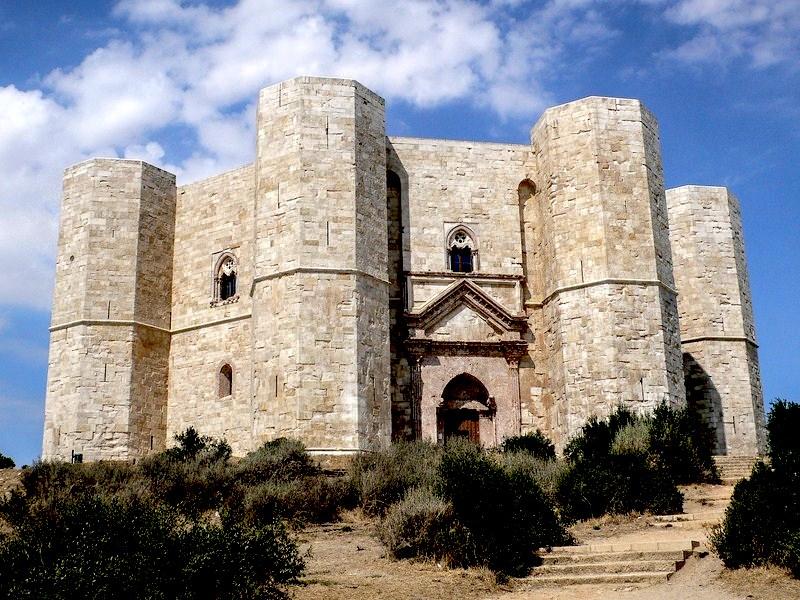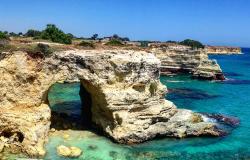Puglia has 27 castles dotted around its region, and out of the 747 castles in the whole of Italy it was the Castel del Monte, from just outside the Pugliese town of Andria that was chosen to be pictured on the reverse of the one-cent coin; in fact, so special is this castle that in 1996, UNESCO added it to its list of World Heritage Sites, saying, “The Castel del Monte is of outstanding universal value in its formal perfection and its harmonious blending of cultural elements from Northern Europe, the Muslim world and classical antiquity. It is a unique masterpiece of medieval military architecture reflecting the humanism of its founder, Frederick II of Hoenstaufen."
The unusually octagonal shaped castle was built upon a rocky bank where it juts out in places giving it at some angles an oddly precarious look. Eight windowless, octagonal towers dominate each of its corners, resembling sentinels looking down blindly over the surrounding countryside. Built from the local calcareous stone, the castle walls have a solitary window set into them with the exception of that facing the town of Andria, here eight windows look down from the upper floor; seven of equal size and a smaller three-mullioned window.
There are only two remaining statues within the courtyard, these being a slab of local stone positioned to represent a parade of knights and a figure depicted in an anthropomorphous posture.
Inside the castle the interior is divided into two further floors accessed by three winding staircases. The first floor is supported by columns of rose coloured stone, with the second floor held up by trilobite marble pillars. The keystones of each floor are decorated with carved crosses and depictions of natural elements.
Up on the first floor indentations and holes in the walls are evidence of a wooden gallery that made it possible to walk from each of the eight towers. The castle has a total of sixteen halls; eight upon each level and these are shaped into trapezoidal rooms where the opposite walls are all parallel: no mean feat, considering the time of its construction.
The Falconer tower houses two male figures, (Telamones) supporting an umbrella shaped vaulted ceiling and evidence of an intricate mosaic floor can be found on the ground floor. Two important pieces of sculpture, a head and an acephalous bust found during the restoration have since been removed to the museum in Bari.
When acquired by the Italian state in 1876, the castle was in a state of disrepair, the external walls had become damaged by natural erosion, some vaulted ceilings had collapsed and parts of the flat roof were unstable due to its retention of rainwater.
Following restoration the castle now serves as a visitor centre and welcomes tourists through its grandiose portico.
Getting there:
The town of Andria is easily accessible by train, however the site is outside the main part of the town; during the holiday season coach trips are available via many of the town’s tourist offices. By car the castle is very easy to find as it lies on the SS170 southwest of the town.
Opening hours are 9.00 am to 5.30 pm with the last available tickets being issued thirty minutes before closing.







